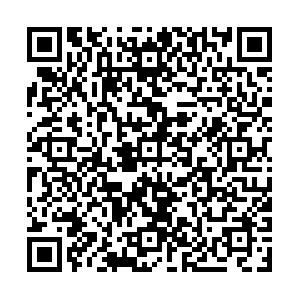2014年北京市居民母乳中二英及其类似物负荷水平
Dioxin-like compounds in human milk samples in Beijing, 2014
-
摘要: 本研究于2014年在北京市采集母乳样品37份,按照国标方法采用高分辨气相色谱-高分辨质谱(HRGC-HRMS)结合同位素稀释技术,测定样品中二英及其类似物含量.总毒性当量的均值为6.74 pg TEQ·g-1脂肪,多氯代苯并呋喃(PCDD/Fs)和二英样多氯联苯(dl-PCBs)毒性当量的均值分别为5.06 pg TEQ·g-1 脂肪和1.68 pg TEQ·g-1 脂肪.与发达国家和地区相比,北京市普通人群的二英及其类似物负荷水平较低.Abstract: Concentrations of polychlorinated dibenzo-p-dioxins, polychlorinated dibenzofurans (PCDD/Fs) and dioxin-like polychlorinated biphenyls (dl-PCBs) in 37 human milk samples collected in 2014 from Beijing residents were determined by high-resolution gas chromatography-high resolution mass spectrometry (HRGC-HRMS) and isotope dilution methodology. The mean valuesof TEQ, based on WHO TEFs 1998, were 5.06pg TEQ·g-1 fat for PCDD/Fs and 1.68 pg TEQ·g-1 fat for dl-PCBs,giving a total of 6.74 pg TEQ·g-1 fatfor PCDD/Fs plus dl-PCBs.The TEQ body burdens of the people living in Beijing were lower than those in the developed countries.
-
Key words:
- human milk /
- dioxin-like compounds /
- bio-monitoring /
- body burden
-

-
[1] CANADY R, CRUMP K, FEELEY M, et al. Safety evaluation of certain food additives and contaminants: Polychlorinated dibenzodioxins, Polychlorinated dibenzofurans, coplanar polychlorinated biphenyls[J]. WHO Food Additives Series, 2001, 48. [2] KOGEVINAS M. Human health effects of dioxins: Cancer, reproductive and endocrine system effects[J]. Human Reproduction Update, 2001. 7(S103): 331-339. [3] 吴永宁, 二英、多氯联苯和氯丙醇的痕量与超痕量检测技术研究[J]. 中国食品卫生杂志, 2005,17(6): 481-486. WU Y N, Capability building in China for ultra-trace analysis of dioxin, PCBs and chloropropanols[J]. Chinese Journal of Food Hygiene, 2005, 17(6): 481-486 (in Chinese).
[4] 吴永宁, 食品污染监测与控制技术[M]. 北京:化学工业出版社,2011. WU Y N, Technology of monitoring and control for food contamination[M]. Beijing: Chemical Industry Press, 2011(in Chinese). [5] LI J, ZHANG L, WU Y, et al. A national survey of polychlorinated dioxins, furans (PCDD/Fs) and dioxin-like polychlorinated biphenyls (dl-PCBs) in human milk in China[J]. Chemosphere, 2009, 75(9): 1236-1242. [6] WHO. Fourth WHO-coordinated survey of human milk for persistent organicpollutants in cooperation with UNEP. Guidelines for Developing a National Protocol, World Health Organization[R]. 2007. [7] [8] VAND B M, BIRNBAUM L, BOSVELD A T, et al. Toxic equivalency factors (TEFs) for PCBs, PCDDs, PCDFs for humans and wildlife[J]. Environmental Health Perspectives, 1998, 106(12): 775-792. [9] SHEN H, DING G, WU Y, et al. Polychlorinated dibenzo-p-dioxins/furans (PCDD/Fs), polychlorinated biphenyls (PCBs), and polybrominateddiphenyl ethers (PBDEs) in breast milk from Zhejiang, China[J]. Environment International, 2012,42(42): 84-90. [10] DIRTU A C AND ADRIAN C. Estimation of daily intake of organohalogenated contaminants from food consumption and indoor dust ingestion in Romania[J]. Environmental Science & Technology, 2010, 44(16): 6297-6304. [11] TAO Z, HONG WEN S, QIAN W, et al. Perfluorochemicals in meat, eggs and indoor dust in China: Assessment of sources and pathways of human exposure to perfluorochemicals[J]. Environmental Science & Technology, 2010, 44(9): 3572-3579. [12] WHO. Environmental Health Series No 34: Levels of PCBs, PCDDs, and PCDFs in breast milk, WHO Regional Office for Europe, Copenhagen, Denmark[R]. 1989. [13] WHO. Environmental Health in Europe No. 3: Levels of PCBs, PCDDs, and PCDFs in human milk: second round of the WHO coordinated exposure study, WHO Regional Office for Europe, Copenhagen, Denmark[R]. 1996. [14] ROLAF V L F X AND RAINER M. Results of the third round of the who-coordinated exposure study on the levels of PCBS, PCDDS and PCDFS in human milk[J]. Organohalogen Compounds, 2002. [15] FOCANT J F, FRÉRY N, BIDONDO M L, et al. Levels of polychlorinated dibenzo-p-dioxins, polychlorinated dibenzofurans and polychlorinated biphenyls in human milk from different regions of France[J]. Science of the Total Environment, 2013, 452-453(5): 155-162. [16] CROES K, COLLES A, KOPPEN G, et al. Persistent organic pollutants (POPs) in human milk: A biomonitoring study in rural areas of Flanders (Belgium)[J]. Chemosphere, 2012,89(8): 988-994. [17] PRATT I S, ANDERSON W A, CROWLEY D, et al. Polychlorinated dibenzo-p-dioxins (PCDDs), polychlorinated dibenzofurans (PCDFs) and polychlorinated biphenyls (PCBs) in breast milk of first-time Irish mothers: Impact of the 2008 dioxin incident in Ireland[J]. Chemosphere, 2012, 88(7): 865-872. [18] Ryan J J and Rawn D F K, The brominated flame retardants, PBDEs and HBCD, in Canadian human milk samples collected from 1992 to 2005; Concentrations and trends[J]. Environment International, 2014,70: 1-8. [19] HARDEN F A, TOMS L M L, SYMONS R, et al. Evaluation of dioxin-like chemicals in pooled human milk samples collected in Australia[J]. Chemosphere, 2007, 67(9): S325-S333. [20] TODAKA T, HIRAKAWA H, KAJIWARA J, et al. Relationship between the concentrations of polychlorinated dibenzo-p-dioxins, polychlorinated dibenzofurans, and polychlorinated biphenyls in maternal blood and those in breast milk[J]. Chemosphere, 2010,78(2): 185-192. [21] HEDLEY A J, TZEWAI W, LING H L, et al. Breast milk dioxins in Hong Kong and Pearl River Delta[J]. Environmental Health Perspectives, 2006, 114(2): 202-208. [22] 张磊, 刘印平, 李敬光, 等. 2007 年北京市居民母乳中二英类化合物负荷水平调查[J]. 中华预防医学杂志, 2013, 47(6): 534-537. ZHANG L, LIU Y M, LI J G, et al. The human body burden of polychlorinated dibenzo-p-dioxins and dibenzofurans and dioxin-like polychlorinated biphenyls in residents' human breast milk from Beijing in 2007[J]. Chinese Journal of Preventive Medicine,2013, 47(6): 534-537(in Chinese).
[23] FAROON O M AND KEITH L S. Polychlorinated biphenyls: Human health aspects[R]. Geneva World Health Organization, 2003, 55. [24] 毕新慧,徐晓白, 多氯联苯的环境行为[J]. 化学进展, 2000, 12(2): 152-160. BI X H, XU X B, Behaviors of PCBs in environment[J]. Progress in Chemistry, 2000, 12(2): 152-160(in Chinese).
-

 点击查看大图
点击查看大图
计量
- 文章访问数: 671
- HTML全文浏览数: 584
- PDF下载数: 376
- 施引文献: 0


 下载:
下载:
